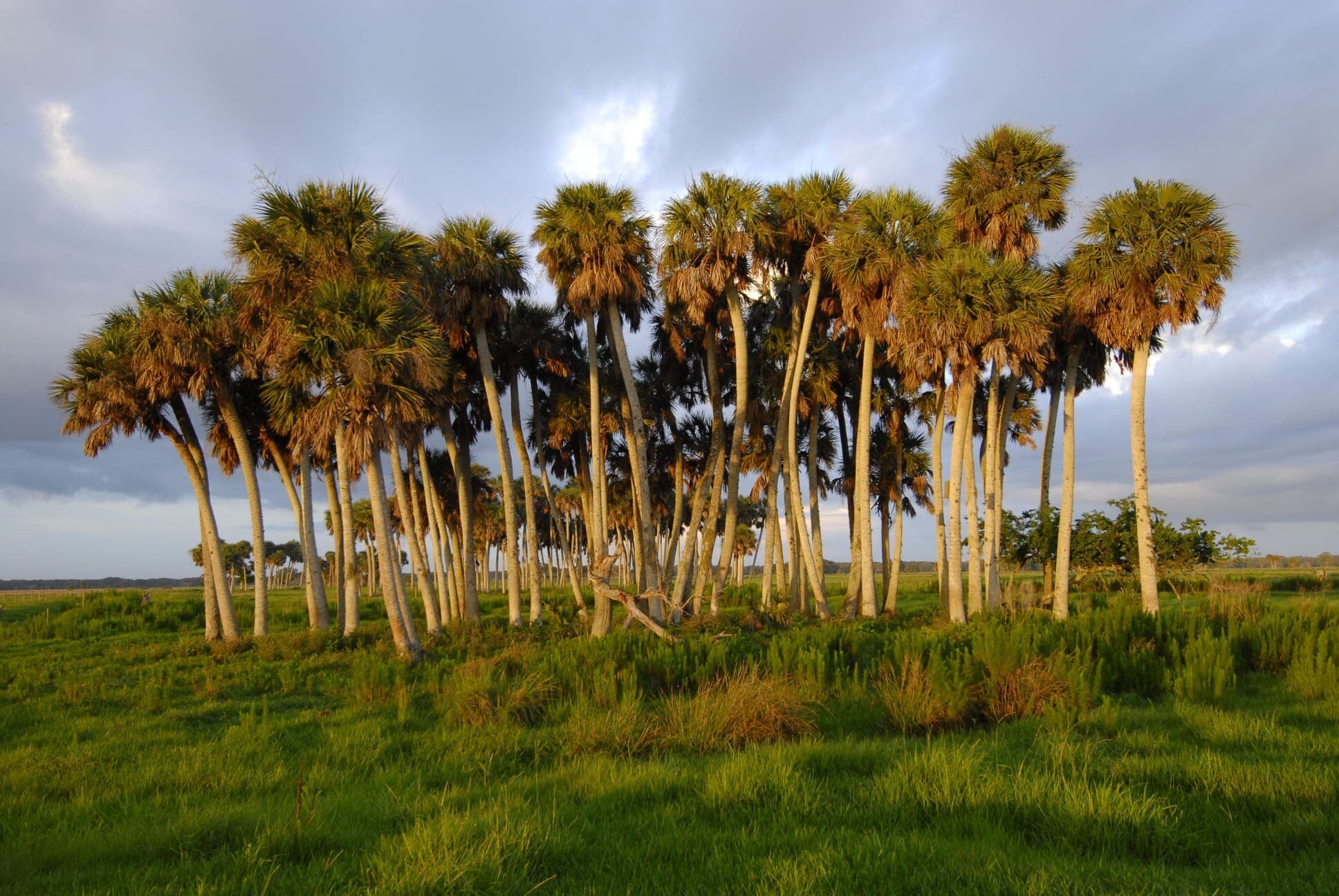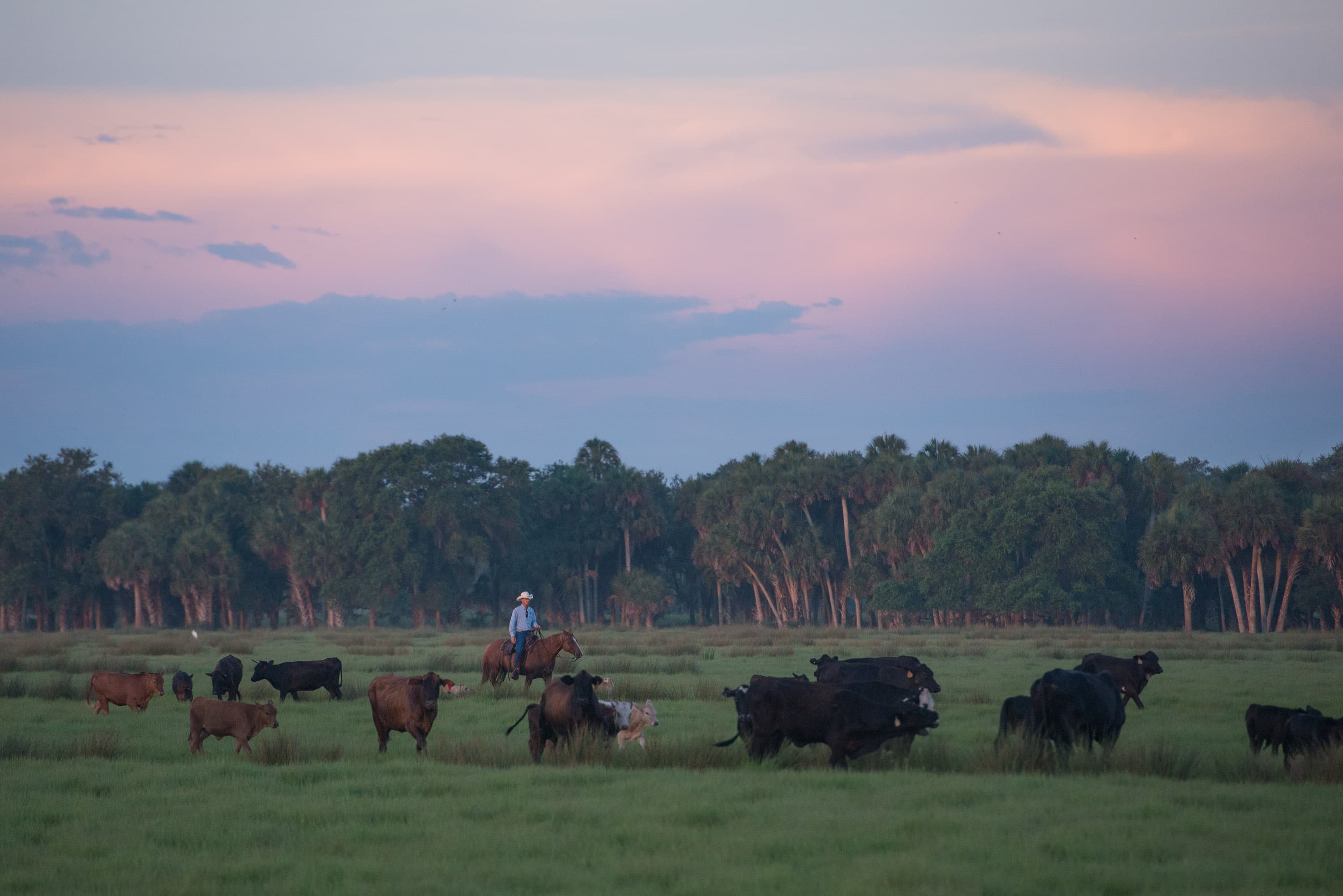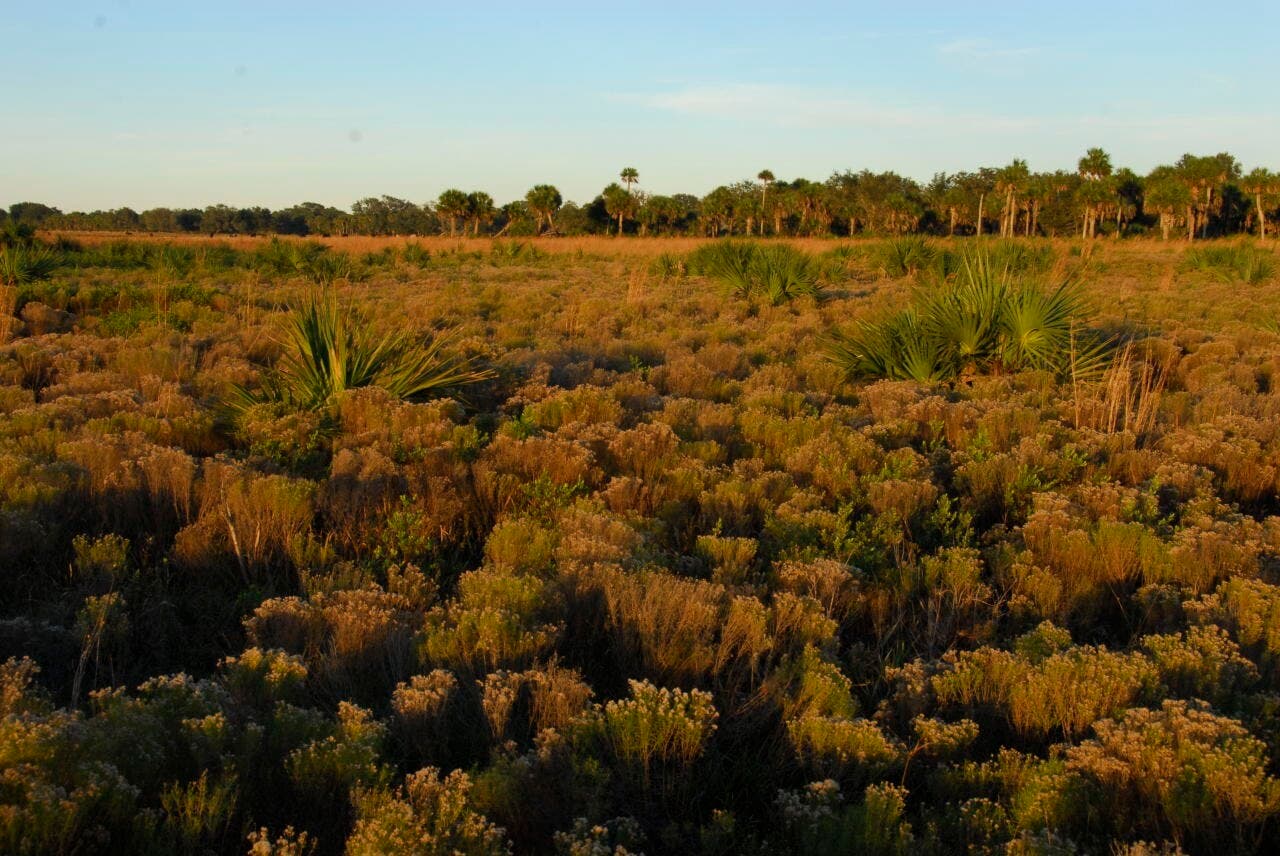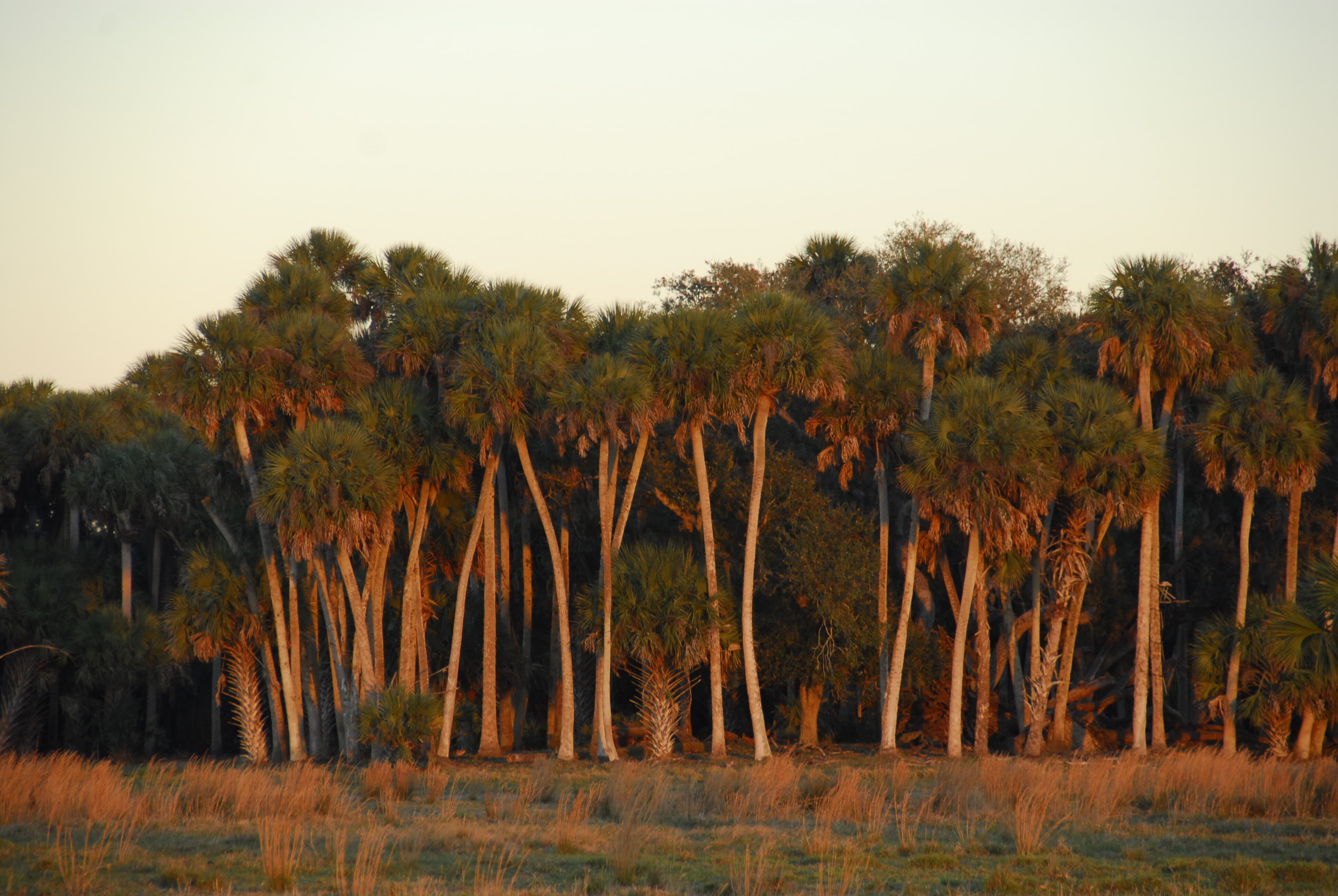 Photo by Carlton C. Ward
Photo by Carlton C. WardBuck Island Ranch Habitats
Buck Island Ranch, like many Florida ranches, contains a combination of improved pasture (nitrogen fertilizer, history of phosphorus fertilizer, liming, Bahia grass), semi-native pastures (unfertilized, a mixture of native and exotic grasses) , woodlands, and wetlands. Because many ranches contain substantial native areas, they are extremely important for increasing and maintaining the biodiversity of the Florida landscape. At Archbold, we have made the institutional commitment to not intensify any of our semi-native and native rangeland because of their biodiversity significance.

Improved pasture
In the 1950s and 1960s, the Durrance family plowed and planted these pastures with exotic forage species, primarily Argentine Bahia Grass (Paspalum notatum). Managers in the decades prior to the establishment of BIR also ditched these pastures heavily, and applied phosphorous fertilizer until IFAS determined the practice unnecessary in 1987. We still fertilize with nitrogen compounds as necessary. More than half the ranch, the central 5,500 acre high ground, was improved. Before improvement, this area would have been dry palmetto prairie and savannah. While these pastures represent a much more altered environment than semi-native ones, they still provide important habitat for many native species, including the Crested Cara Cara (Caracara cheriway), Burrowing Owl (Athene cunicularia) and the Eastern Meadowlark (Sturnella magna).
Semi-native pasture
The 4,500 acres of semi-native pasture ringing Buck Island Ranch are low-lying and wet, and were wetter still before regional and local draining in the 1940s-1970s. We use them for grazing primarily in the winter dry season. Unlike upland improved pastures, these semi-native prairies have never undergone heavy management. No one has fertilized or planted them, and they have many fewer ditches than the uplands. These pastures still contain many native wet prairie plant species, including Bluestem Grass (Andropogon spp.,) Redroot (Lachnanthes caroliniana) Slender Flattop Goldenrod (Euthamia minor,) and Meadow Beauty (Rhexia spp.) Our East Marsh North Wetland Reserve Program site even includes a remnant of rare calcareous wet prairie, home to high densities of Tall Three-awn (Aristida patula) and Purple Muhly (Muhlenbergia sericea).

 Photo by: Carlton Ward, Jr.
Photo by: Carlton Ward, Jr.Oak and palm hammock
The ranch has patches of Cabbage Palm (Sabal palmetto) and Live Oak (Quercus spp.) trees called hammocks, a Seminole Indian word meaning ‘shady place’. Our largest hammocks are a mile long and 100ft. wide. Hammocks naturally occur on high ground, and would have been islands in a vast wetland before the massive regional draining of the late 1940s-1960s. Archeological evidence demonstrates that the Seminoles canoed to these islands and hunted animals like White-tailed Deer (Odocoileus virginianus) that took refuge there, hence the name Buck Island Ranch. These hammocks still house deer and a variety of other animals, such as Florida Black Bear (Ursus americanus floridanus), and Eastern Diamondback Rattlesnake (Crotalus adamanteus.) Our East Marsh Wetland Reserve Program site includes remnants of wet savanna dominated by Baker’s Cordgrass (Spartina bakeri) or Sawgrass (Cladium jamaciense) with Cabbage Palm, as once would have typified this Indian Prairie region.
Seasonal wetlands
BIR has about 600 small seasonal wetlands, most no more than 1.5 acres in size, which fill during the rainy season when groundwater levels are high. Our research shows that wetlands in semi-native pastures tend to have correspondingly more native and perennial species, compared to more exotic and annual species in wetlands in improved pastures. Our many common native wetland plant species include Lance-leaved Arrowhead (Sagittaria lancifolia), Common Rush (Juncus effusus), Maidencane (Panicum hemitomon) and Pickerelweed (Pontedaria cordata). Animals supported by these wetlands include Sandhill Cranes (Grus canadensis), Wood Storks (Mycteria americana), American Green Treefrog (Hyla cinerea), and the Everglades Pygmy Sunfish (Elassoma evergladei). Our research explores how ranch management affects plant and animal communities in some of these wetlands.
